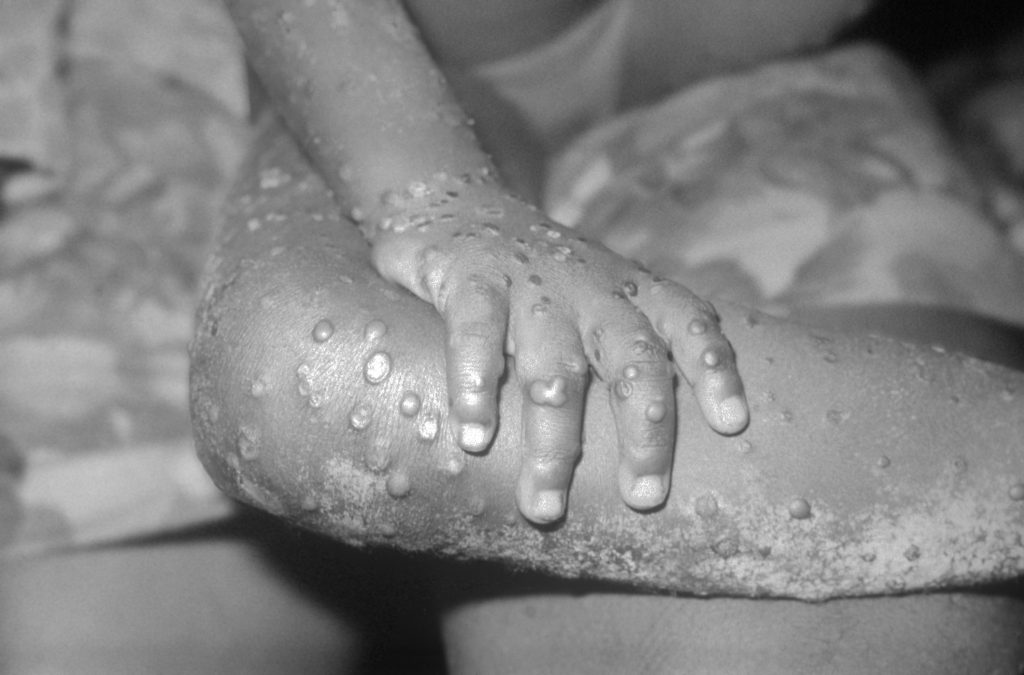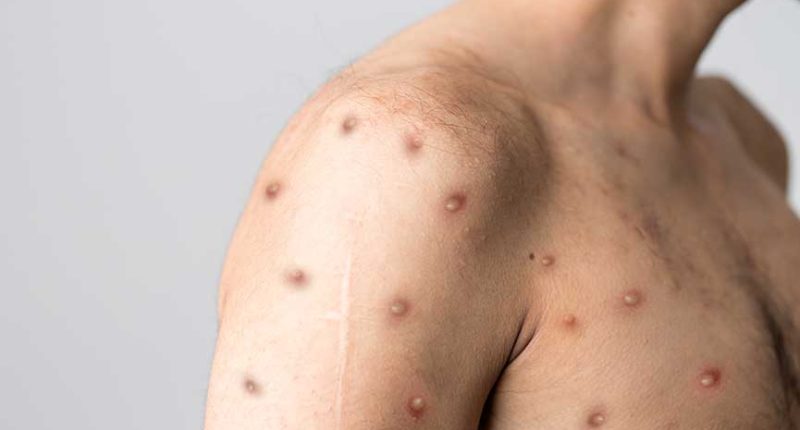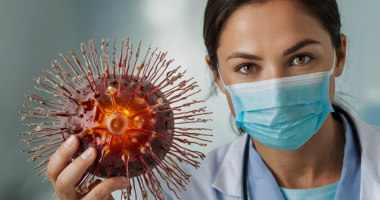The World Health Organization (WHO) has declared a global emergency due to the monkeypox virus outbreak affecting Africa.
In November, WHO confirmed that the virus was sexually transmitted in the Democratic Republic of Congo for the first time, and African scientists warned that this could make it difficult to control the disease.
The worst-hit country in Africa is the Democratic Republic of Congo, which has recorded more than 12,000 cases and at least 470 deaths in its largest outbreak this year. South Africa, which last recorded a case of monkeypox in 2022, also reported a new outbreak this year.
The monkeypox virus, which emerged in the Republic of Congo, is spreading rapidly. The virus is also spread through hand contact, shared towels, bed sheets, and other items. There are 156 deaths.
What is Monkeypox?
Monkeypox virus is a zoonotic virus that can be transmitted from animals to humans. This virus belongs to the same family as the variola virus that causes smallpox and is related to the vaccinia virus used in the smallpox vaccine. It is named after the virus that was first discovered in laboratory monkeys in 1958, but its main carriers are rodents in Africa.

The virus is transmitted in two ways. First, it can be transmitted from animals to humans through bites or scratches from infected animals, contact with wild animal meat, or direct contact with body fluids of infected animals. Second, it can be transmitted from humans to humans through respiratory droplets during prolonged face-to-face contact, direct contact with body fluids or lesion material, or indirect contact such as through contaminated bedding or clothing.
What are the Symptoms of Monkeypox Virus?
The symptoms of the monkeypox virus are similar to those of smallpox but are generally milder. The symptoms appear after the incubation period following exposure to the virus and typically develop in two stages:
1. Prodromal (Early Symptoms) Stage:
- Fever: A high fever is usually the first symptom of the infection.
- Headache: Severe headaches may occur.
- Muscle Aches: There may be widespread body aches and muscle pain.
- Swollen Lymph Nodes: Lymph nodes in the armpits, neck, and groin area swell. This swelling is a distinguishing feature from smallpox.
- Fatigue and Weakness: Extreme tiredness and a general feeling of weakness are common.
2. Rash Stage:
- Rash Development: 1-3 days after the onset of fever, a rash typically starts on the face and then spreads to other parts of the body. The rash can cover the entire body, including the palms of the hands and soles of the feet.
- Stages of the Rash: The rash begins as macules (flat lesions), progresses to papules (raised lesions), then to vesicles (small fluid-filled blisters), and finally to pustules (blisters filled with pus).
- Crusting: The pustules eventually dry up, forming crusts that fall off after about two weeks.
These symptoms can vary depending on the severity of the infection and the individual’s overall health. In some cases, particularly in individuals with weakened immune systems, complications may develop. Therefore, it is important to seek medical attention immediately if symptoms appear.
How Is Monkeypox Virus Diagnosed?
The diagnosis of monkeypox virus is made by evaluating clinical signs and laboratory tests. First, doctors examine the patient’s symptoms and evaluate epidemiological information, such as whether they have traveled to areas carrying monkeypox virus or been in contact with an infected person. The presence of characteristic symptoms of the disease, such as fever, headache, muscle pain, lymph node swelling and typical rash, are important in the initial stages of the diagnosis process.
Laboratory tests are performed for definitive diagnosis. Polymerase Chain Reaction (PCR) testing is the most commonly used method to detect DNA of the virus in samples taken from skin lesions or crusts. PCR can confirm the presence of the virus with high sensitivity and specificity. In addition, the presence of antibodies can be detected by taking a patient’s blood samples. This test helps determine whether the infection is active or past by measuring the immune response to the virus. Finally, it is also possible to isolate and culture the virus in a laboratory setting, but this method usually takes longer and requires special equipment.
How Contagious is Monkeypox?
Monkeypox is a virus that is contagious from animals to humans. Historically, only limited human-to-human transmission has been observed, with an estimated transmission rate ranging from 3.3% to 30%. However, during a recent outbreak in the Democratic Republic of the Congo, the risk of transmission of the virus was stated as 73%. People who are infected or at risk of infection may be at risk of transmission from the moment symptoms appear until 1 day before and until 21 days after the first symptoms appear until no symptoms appear.
Monkeypox is generally transmitted through the following means:
- Contact with an infected person or animal
- Contact with contaminated materials
- Body fluids
- Lesions
- Respiratory droplets (Face-to-face conversation)
Transmission by droplet transmission often requires prolonged face-to-face contact. The recent increase in the rate of person-to-person transmission may be due to waning immunity in the general population due to the smallpox vaccine no longer being administered.
Is Monkeypox Curable?
As with many viral diseases, treatment for monkeypox virus can include supportive symptom management. In addition, methods such as smallpox vaccine, antivirals, and vaccine immune globulin (VIG) can be used to control monkeypox outbreaks. Scientific studies are ongoing to evaluate the suitability of vaccination for the prevention and control of monkeypox.
What Does Monkeypox Look Like?
The monkeypox virus is known for its distinctive symptoms, especially visible on the skin. At the beginning of the infection, the person usually experiences flu-like symptoms such as fever, headache, muscle aches, back pain, swollen lymph nodes, chills and fatigue. These early symptoms are the body’s first response to the infection.
A rash appears 1-3 days after the fever begins. The rash usually starts on the face and then spreads to other parts of the body, especially the palms of the hands and soles of the feet. The rash goes through several distinct stages: First, macules, which are flat, red spots on the skin, appear. Then, these spots swell and are called papules. The papules then turn into small blisters filled with clear fluid, called vesicles. The vesicles eventually fill with pus and turn into pustules. These pustules are round and hard. In the final stage, the pustules dry up and crust over. The crusts fall off and the skin begins to heal.
Another distinguishing feature of monkeypox is swelling of the lymph nodes, which is rarely seen in similar diseases such as smallpox or chickenpox. This appearance of the rash and other symptoms helps health care providers distinguish monkeypox from other similar viral infections.
Monkeypox Lesion
Monkeypox lesion is one of the most distinct and critical signs of the disease. They progress through several identifiable stages and have specific characteristics that help in diagnosing the infection. Here’s a more detailed explanation of what monkeypox lesions look like:
Appearance and Progression
- Macules: The first stage of the rash consists of flat, red spots on the skin. These macules usually appear on the face and then spread to other parts of the body, including the palms of the hands and the soles of the feet.
- Papules: Within a few days, the macules develop into papules, which are raised bumps. These bumps indicate the progression of the rash and begin to cover larger areas of the skin.
- Vesicles: The papules then transform into vesicles, which are small, fluid-filled blisters. These vesicles are typically clear and can vary in size.
- Pustules: As the vesicles mature, they fill with pus, becoming pustules. These pustules are often firm to the touch and can be quite painful. They are round and well-defined, giving the rash a characteristic appearance.
- Scabbing: Eventually, the pustules begin to dry out and form scabs. The scabs are crusty and will eventually fall off as the skin beneath heals. This stage marks the end of the rash’s lifecycle.
Distribution and Characteristics
- Distribution: The lesions are often most concentrated on the face, arms, and legs but can be found on the trunk and other body areas. They can also appear on mucous membranes, such as inside the mouth and on the genitals.
- Swelling of Lymph Nodes: Unlike other similar infections, such as smallpox or chickenpox, monkeypox is characterized by the swelling of lymph nodes, particularly in the neck, armpits, and groin.
Healing
- Healing Process: The lesions heal gradually, and the scabs typically fall off about two weeks after they appear. There might be some residual scarring or pigmentation changes where the lesions were, but these generally fade over time.
Is There Monkeypox Vaccine?
An antiviral agent developed for smallpox, known as tecovirimat, was licensed for monkeypox by the European Medical Association (EMA) in 2022 based on data from animal and human studies. It is not yet widely available.
Monkeypox vaccination against smallpox has been shown in several observational studies to be approximately 85% effective in preventing monkeypox. Therefore, prior smallpox vaccination may provide a milder form of monkeypox. An even newer vaccine based on modified attenuated vaccine virus was approved for the prevention of monkeypox in 2019. It is a two-dose vaccine that is in limited supply.
In Which Countries Has Monkeypox Been Seen So Far?
While 96% of monkeypox cases occur in the Democratic Republic of the Congo, the disease has spread to many neighboring countries where it is not normally endemic, such as Burundi, Kenya, Rwanda and Uganda. The virus has spread to about 100 countries, including parts of Europe and Asia where it is not normally seen.





